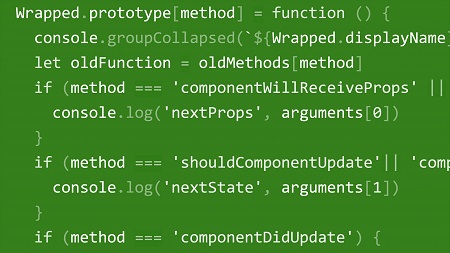
English | MP4 | AVC 1280×720 | AAC 48KHz 2ch | 2h 08m | 384 MB
Learn the newest versions of JavaScript—ES6, ES2016, and beyond—so that you can create more efficient and concise React components. ES6 and ES2016 include many features that simplify React development, making your code cleaner and easier to read. Join Carl Peaslee, as he uses JavaScript features from ES6 and beyond to build a full-featured React project: a text editor that pulls text from an API and allows users to apply their own unique styles. As he builds the project, he introduces ES2016 features such as import and export, const and let, template literals, arrow functions, the spread operator, destruction assignments, getters and setters, and promises. He also touches on new features from ES2017 such as async. By the end of the course, you’ll create a number of standalone, reusable components that could work in any project—such as a timer and validated forms—while gaining a deeper understanding of new JavaScript and React syntax.
Topics include:
- Using const and let
- Importing and exporting modules
- Arrow functions
- Destructing assignments
- Arguments and template literals
- Extended parameter handling with the spread operator
- Generating custom styles
- Classes, getters and setters
- Promises
Table of Contents
1 Welcome
2 What you should know
3 Using the exercise files
4 Installing global dependencies
5 Project overview
6 Starting a project
7 const and let
8 Limitations of const and let
9 Importing and exporting
10 Importing styled components
11 Arrow functions
12 Destructuring assignments
13 Object assembly shorthand and computed property names
14 Spread operator
15 Template literals
16 Creating new rules
17 Rendering rules
18 Function arguments
19 Creating markup with highlight.js
20 Registering languages
21 Generating custom styles
22 Introduction to classes
23 Using extends and super
24 Getter, setter and, static
25 Promises
26 The Fetch API
27 Async and try-catch
28 Using array.includes
29 Next steps
Resolve the captcha to access the links!